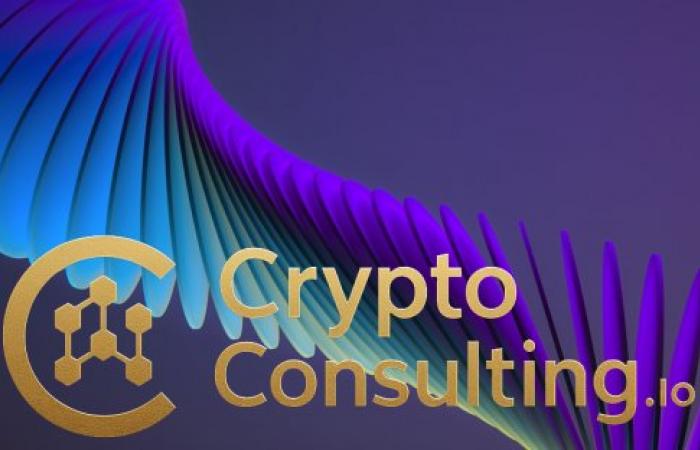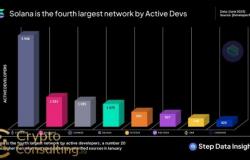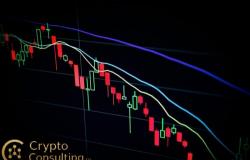
The NFT market has demonstrated remarkable resilience and maturation in 2025, achieving $45 billion in annual sales volume while shifting focus from speculative mania to sustainable utility. This recovery and evolution represents the NFT sector moving beyond the hype cycle that characterized 2021-2022 into a more measured phase where digital ownership technology finds genuine applications across gaming, real estate, identity verification, supply chain management, and enterprise systems. The transformation from speculative bubble to productive technology mirrors similar patterns in other disruptive innovations, suggesting that NFTs have secured their position as permanent components of the digital economy. Understanding the current NFT landscape, emerging use cases, and market dynamics is essential for investors, developers, and businesses evaluating how blockchain-based digital ownership can create value in their domains.
The $45 billion sales figure represents a substantial recovery from the depths of the 2022-2023 NFT winter when monthly volume fell below $1 billion. This recovery has occurred without the speculative excess that characterized earlier peaks, indicating healthier market fundamentals. Trading activity has become more focused on NFTs with clear utility rather than profile picture collections with no function beyond social signaling. The composition of NFT sales has diversified substantially, with gaming assets, virtual real estate, digital collectibles with utility, and enterprise applications replacing simple art JPEGs as dominant categories.
Gaming NFTs Drive Market Growth

Blockchain gaming has emerged as the primary driver of NFT market recovery, accounting for over 45% of total NFT transaction volume. Gaming NFTs provide clear utility—they enable gameplay, can be used across game modes or titles, and generate economic value through play-to-earn mechanisms. This contrasts sharply with earlier profile picture NFTs where value derived primarily from social status rather than functionality. The shift toward utility-driven NFTs has attracted broader audiences who understand value propositions based on function rather than speculation.
Major gaming NFT collections have achieved sustained value through regular content updates, gameplay integration, and community engagement. Axie Infinity NFTs, representing creatures used in competitive gameplay, maintain floor prices above $50 despite earlier peaks near $400. This price stability reflects genuine demand from players rather than speculative buying. Gods Unchained cards function as playable trading card game assets with active secondary markets. Illuvium creatures enable gameplay in a AAA-quality open-world game. These gaming NFTs derive value from entertainment utility comparable to how traditional game items have value.
Interoperability initiatives enable gaming NFTs to function across multiple titles within shared ecosystems. Projects including Mythical Games and Immutable have created platforms where game developers can integrate existing NFT standards, allowing items earned in one game to appear in others. This cross-game utility multiplies NFT value by expanding use cases beyond single titles. While universal interoperability remains aspirational due to technical and design constraints, ecosystem-specific compatibility provides meaningful benefits.
Play-to-earn economics have matured to become more sustainable. Earlier models that paid players unsustainably high rewards from new player funds have been replaced by games that generate genuine revenue through cosmetic sales, battle passes, tournament fees, and advertising. This revenue funds player rewards, creating sustainable economies. The professionalization of gaming NFTs, with scholarship programs, competitive esports, and content creation ecosystems, has established gaming as the most viable long-term NFT sector.
Virtual Real Estate and Metaverse Development
Virtual real estate represents the second-largest NFT category by transaction volume, with major metaverse platforms generating billions in land parcel sales. The Sandbox, Decentraland, and Otherside have sold over $8 billion in virtual land since launching. These platforms position themselves as digital worlds where users can create experiences, build businesses, host events, and socialize. Virtual land ownership through NFTs provides the foundation for these metaverse economies.
Brand activations in metaverse platforms have validated virtual real estate value. Major corporations including Nike, Adidas, JPMorgan, Samsung, and Warner Music Group have purchased prominent virtual real estate parcels to establish metaverse presence. These brands host virtual events, sell limited-edition digital goods, and create interactive experiences that attract millions of visitors. The corporate validation provides credibility to virtual real estate markets and demonstrates that major brands see strategic value in metaverse positioning.
Virtual real estate development has become a specialized industry. Professional metaverse developers purchase land parcels, build experiences, and monetize through virtual events, advertising, retail, and entertainment. Some developers lease virtual spaces to other users, creating recurring revenue streams comparable to physical real estate. The development of metaverse infrastructure, including roads, utilities, and community spaces, mirrors physical urban development patterns.
Criticism of virtual real estate centers on actual usage versus speculative holding. While some metaverse parcels host active experiences with regular visitors, many remain undeveloped. The gap between purchased land and active development raises questions about whether current valuations reflect genuine utility or speculation about future growth. Metaverse platforms have responded by implementing incentives for development and penalties for unused land hoarding.
Premium location pricing dynamics have emerged in major metaverses. Parcels near popular destinations, main roads, or community hubs command substantially higher prices than peripheral locations, replicating physical real estate location premiums. This price differentiation indicates that users value proximity and visibility, suggesting that metaverse urbanism is developing coherent economic geography.
PFP Collections Evolve Beyond Profile Pictures
Profile picture NFT collections including Bored Ape Yacht Club, CryptoPunks, and Azuki maintain relevance through utility expansion beyond simple digital art. These projects have introduced token-gated communities, commercial licensing rights, physical merchandise, gaming integration, and metaverse experiences that provide ongoing value to holders. The evolution from simple profile pictures to comprehensive brand ecosystems demonstrates how successful NFT projects can build sustainable value.
Yuga Labs, creators of Bored Ape Yacht Club, has developed a comprehensive ecosystem including Otherdeed metaverse land, ApeCoin cryptocurrency, gaming collaborations, and licensing partnerships. This ecosystem approach converts a profile picture collection into a multimedia brand comparable to traditional entertainment franchises. The strategy has maintained Bored Ape floor prices above $50,000 when many comparable PFP projects have declined to near-zero value.
Commodity rights and licensing represent significant value additions. Many NFT projects now grant holders commercial licensing rights to their NFT images, enabling merchandise sales, derivative works, and business use. This licensing creates economic opportunities beyond simple resale, particularly for entrepreneurs who can effectively monetize NFT imagery through products and services.
Community and social utility persist as value drivers for premium PFP collections. Owning certain NFTs signals membership in exclusive communities with access to events, networking, and social capital. While harder to quantify than functional utility, these social benefits create genuine value for participants who derive worth from community membership and identity signaling.
Real-World Asset Integration
NFT technology is increasingly being applied to represent ownership of physical assets including real estate, luxury goods, commodities, and vehicles. These real-world asset NFTs bridge blockchain technology with traditional property rights, potentially reducing transaction costs, improving liquidity, and enabling fractional ownership. While still nascent compared to digital-native NFTs, RWA applications represent substantial market potential.
Real estate tokenization through NFTs enables fractional ownership and simplified transfers. Rather than complex legal processes for property transactions, NFT-based ownership can transfer through blockchain transactions with smart contracts automatically handling escrow, title insurance, and recording. Several platforms have piloted residential property NFTs in multiple jurisdictions, though legal and regulatory frameworks remain under development.
Luxury goods authentication and provenance tracking represent practical NFT applications with clear value propositions. Brands including LVMH, Prada, and Cartier have explored NFT certificates of authenticity that accompany physical products. These NFTs provide verifiable proof of authenticity, track ownership history, and facilitate resale markets. The NFT serves as digital twin for the physical item, solving long-standing problems of counterfeiting and provenance verification in luxury markets.
Supply chain tracking NFTs enable transparency and authentication throughout product lifecycles. Each component or assembly stage can be represented as an NFT, creating immutable records of manufacturing origin, shipping routes, and quality inspections. This application particularly benefits industries where provenance and authenticity are critical including pharmaceuticals, aerospace, and food safety.
Fractional ownership models enabled by NFTs democratize access to high-value assets. Expensive assets like commercial real estate, fine art, or collectibles can be divided into thousands of NFT shares, allowing ordinary investors to access asset classes previously limited to wealthy individuals. Several platforms now offer fractional ownership of everything from rental properties to classic cars through NFT shares.
Enterprise and Identity Applications
Enterprise adoption of NFT technology for non-speculative applications has accelerated as organizations recognize operational benefits. These enterprise NFTs serve internal functions rather than speculative trading, representing credentials, access rights, intellectual property, or workflow tracking. The enterprise NFT market operates largely separate from consumer speculation and focuses on efficiency gains and cost reduction.
Credentials and certifications issued as NFTs provide verifiable, tamper-proof records of education, professional licenses, and skills. Universities including MIT and several major institutions issue diploma NFTs that graduates control and can present to employers who can verify authenticity without contacting issuing institutions. Professional certifications, continuing education credits, and skill badges increasingly use NFT technology for verification.
Access control and event ticketing represent practical NFT applications solving real problems. NFT tickets eliminate fraud, enable secure resale markets where original issuers capture royalties, and provide proof-of-attendance records valuable for community building. Major events including conferences, concerts, and sports have successfully implemented NFT ticketing systems. Smart contract functionality enables sophisticated terms including transfer restrictions, royalty splits, and conditional access.
Intellectual property management through NFTs enables efficient licensing, royalty distribution, and usage tracking. Music rights, patents, and copyrights can be represented as NFTs with smart contracts automatically distributing royalties to rights holders. This automation reduces administrative costs and ensures accurate, timely payments compared to traditional royalty systems plagued by inefficiency and delayed payments.
Market Infrastructure Maturation
NFT marketplace infrastructure has matured substantially, with professional platforms offering features comparable to traditional asset markets. OpenSea remains dominant but faces competition from Blur, Magic Eden, LooksRare, and specialized marketplaces for specific NFT categories. This competition has driven fee reductions, user experience improvements, and feature innovation that benefits traders and creators.
Royalty enforcement has become contentious, with marketplaces differing on whether to honor creator royalties. Some platforms default to enforcing royalty payments to original creators on secondary sales, while others allow users to opt out. This debate highlights tensions between creator compensation and buyer preference for lower fees. Several projects have implemented on-chain royalty enforcement that cannot be circumvented, though these technical solutions have limitations.
Lending and financing markets for NFTs have developed sophisticated infrastructure enabling holders to access liquidity without selling assets. NFT lending platforms allow holders to use NFTs as collateral for loans, typically at 30-50% loan-to-value ratios. This lending creates capital efficiency by enabling holders to maintain NFT ownership while accessing cash for other purposes. Total NFT-backed lending exceeds $2 billion, demonstrating substantial market depth.
Fractional ownership platforms enable high-value NFTs to be divided into numerous shares tradeable on secondary markets. This fractionalization democratizes access to premium NFTs while creating liquidity for otherwise illiquid assets. Governance mechanisms allow fractional owners to vote on decisions regarding the underlying NFT, creating decentralized collective ownership structures.
Future Outlook and Emerging Trends
Artificial intelligence integration with NFTs represents an emerging trend with substantial potential. AI-generated NFT art has become controversial but increasingly sophisticated, with some AI art NFTs selling for six figures. AI could also enable dynamic NFTs that evolve based on owner interaction, market conditions, or external data inputs, creating more engaging digital assets.
Physical-digital hybrid products linking NFTs with physical items continue expanding. Fashion brands increasingly pair physical clothing and accessories with digital NFT versions wearable in virtual environments and games. This phygital approach provides dual utility and appeals to consumers who inhabit both physical and digital spaces.
Social media integration of NFT displays has become standard, with Twitter, Instagram, and other platforms supporting verified NFT profile pictures. This integration provides social utility that justifies continued NFT ownership for status-conscious users. Further social media integration including NFT-gated content and communities will likely expand social utility.
Conclusion
The NFT market's recovery to $45 billion annual volume demonstrates that digital ownership technology has progressed beyond speculative mania into sustainable applications with genuine utility. While challenges remain including user experience friction, regulatory uncertainty, and questions about long-term value, the breadth of use cases from gaming to real estate to enterprise credentials suggests NFTs will remain permanent components of digital infrastructure. As technology matures and more practical applications emerge, NFTs are positioned to capture increasing economic activity across diverse industries and use cases.





